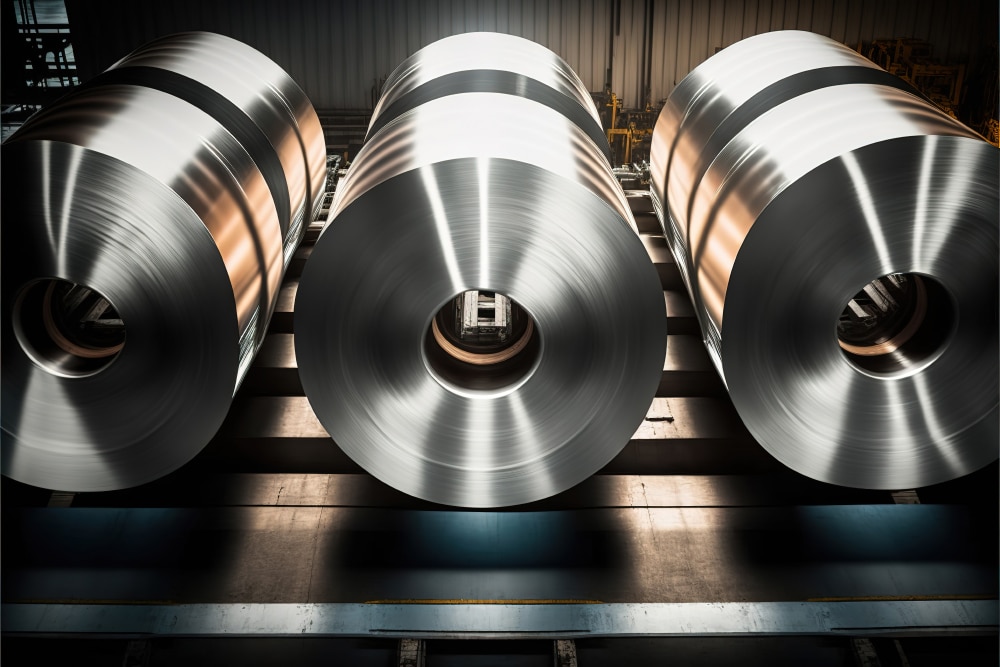Stainless MMI: Stainless Inventories High, Mill Lead Times Low as Base Prices Hold Firm

The nickel price index continued to trend downward, as it fell to its lowest level since July 2022 by mid-September. Following an over 7% decline during August, prices fell nearly 3% during the first two weeks of September. As prices drop toward historical support zones, they come close to wiping out nearly all gains from the last major uptrend in H2 2022. While the LME nickel contract remains plagued by low liquidity, the continued creation of lower highs and lower lows suggests bearish momentum within the market.
Overall, the Stainless Monthly Metals Index (MMI) retuned downward from last month, with a 3.1% decline from August to September.
Does your company have a stainless buying strategy based on current nickel price trends?

Stainless Inventories Reportedly “Supplied to Over-Supplied”
The stainless steel market remains decidedly bearish as the final quarter of 2023 nears. Suppliers described current inventory levels among both service centers and end users as “supplied to oversupplied.” While 304 and 430 grades account for the majority of the market, oversupply is apparently indicative through much of the stainless market.
Numerous end users reportedly intend to sit out of the market for the remainder of the year, which will pressure service center pricing as they work to reduce inventories at the end of the year. Competitive import prices tempted some OEMs back into the market, as witnessed by a jump in cold rolled import licenses during August. However, imports throughout the year remain muted from 2022 amid the shift in market dynamics. View MetalMiner’s track record of forecasting where industrial metal prices are headed.
Stainless Mill Lead Times Remain Short, Base Prices Hold Firm

Amid limited demand, 304 mill lead times remain historically short. Lead times continue to average around 4.5 weeks. Under normal conditions, mill lead times typically extend from 6 to 8 weeks.
In spite of the bearish market, base prices have remained unchanged since January 2022. Domestic mills are expected to hold firm on base prices during the remainder of the year to mitigate the impact of lower demand. While greater market pressure could change this, the effective duopoly between NAS and Outokumpu and long lead times for imports will allow domestic producers greater control over market pricing.
Impress your executive team and lead like a procurement pro. Decode nickel market volatility’s impact on earnings with the Monthly Metals Outlook report. Start with a free sample, then subscribe.
Broken Nickel Market Still Ripe For Challengers

September marked the year-and-a-half anniversary of the March 2022 nickel squeeze, which caused liquidity within its 3M nickel contract to plunge. While trading volumes picked up slightly throughout the summer, they sit far beneath their averages from previous years. This leaves the LME nickel contract ripe for the picking.

In addition to Global Commodity Holdings, the Shanghai Futures Exchange (SHFE) is reportedly considering the creation of its own international nickel futures contract. According to Reuters, the exchange “has been studying the structure of the nickel market and supply and demand at the instigation of industry participants looking for alternatives.”
It remains unclear whether a viable alternative contract would bring traders back to the market. The impact of the March 2022 squeeze reverberated across exchanges, as open participation on the SHFE’s own active nickel contract dropped amid the nickel market exodus. How exactly these factors will impact 2024 nickel prices and market volatility are all covered in MetalMiner’s 2024 Annual Metals Outlook.
Other Nickel Price Factors at Work
Meanwhile, as Class 2 nickel supply becomes increasingly important amid the rise of EVs, Singapore’s Abaxx Commodities Exchange is currently working on a physically settled nickel sulfate futures contract it hopes to have available by the end of the year. Abaxx’s contract would not compete with the LME or SHFE, which reflect the Class 1 nickel price. Should it become liquid enough to use as a pricing benchmark, however, it would provide an important reference point within the increasingly bifurcated nickel market between Class 1 and 2 material.
As the LME fights to retain its dominant position as the global pricing benchmark, the beleaguered exchange’s continued struggles to regain market participants begs the question as to why stainless producers use LME nickel prices to begin with. Outokumpo boasts using an average of 90% recycled material content within its melt mixes. This would suggest scrap prices hold a far more important position in the actual cost of stainless steel.
Beyond that, there remains a considerable margin between scrap prices and LME prices, a notable benefit to mills. Low liquidity on the LME contract exacerbates this delta, as it has led to a lack of momentum within price action causing slow overall price movement. This, in turn,
has led to slow declines within the stainless surcharge.
Start custom mapping price points for your company’s specific stainless sourcing needs using MetalMiner Insights – your path to cost-effective stainless and nickel sourcing. Ready to learn more?
Biggest Nickel Price and Stainless Steel Price Moves
- Chinese ferrochrome lump prices once again saw the largest increase within the index, as prices rose 5.87% to $2,025 per metric ton as of September 1.
- Chinese ferromolybdenum lump prices rose by 5.03% to $38,627 per metric ton.
- Meanwhile, Korean 304 2B cold rolled coil prices fell 6.38% to $2,643 per metric ton.
- The Indian primary nickel price saw a 6.64% drop to $20.99 per kilogram.
- LME primary 3 month nickel prices fell by 7.1% to $20,350 per metric ton.


Leave a Reply